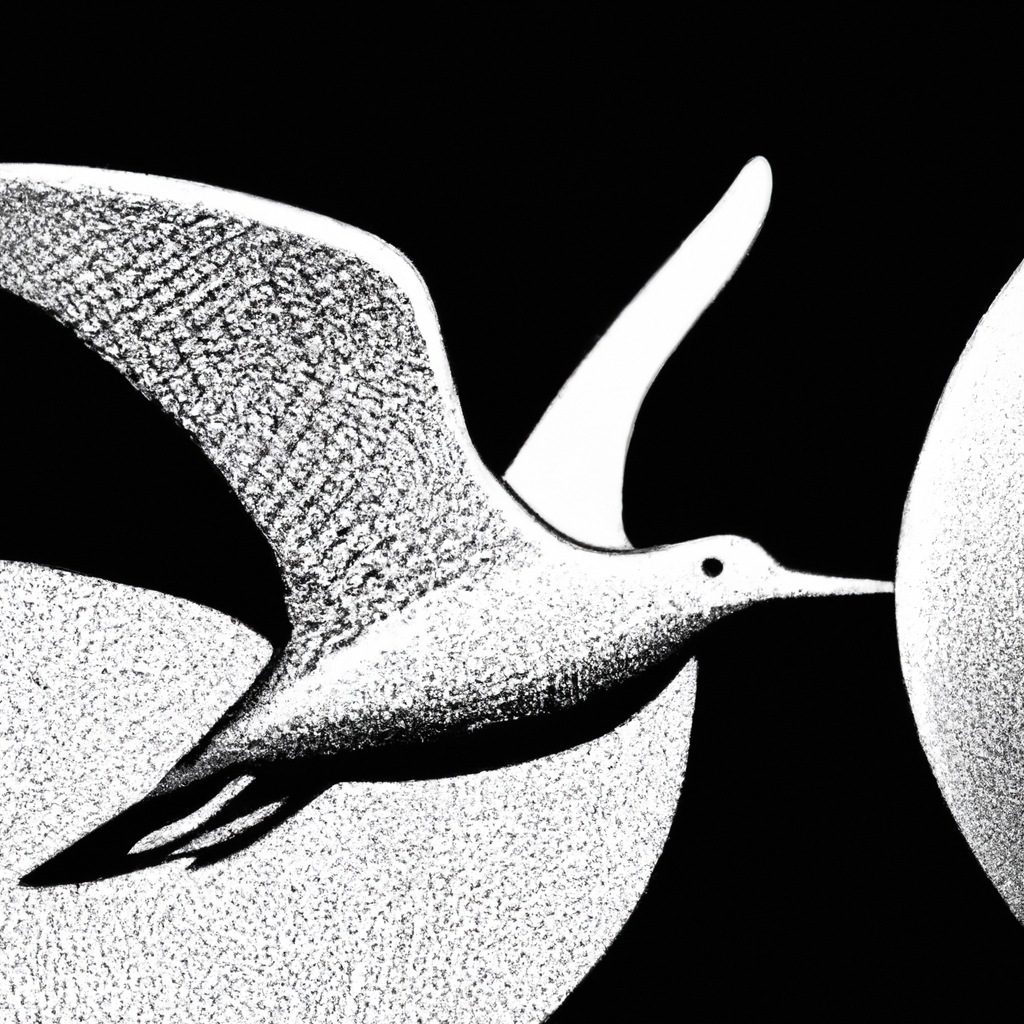We may earn money or products from the companies that may be mentioned in this post.
Imagine yourself on a golf course, swinging your club with precision and skill. As you watch your ball soar through the air, you can only dream of achieving the extraordinary feat that is an albatross in golf. But just how rare is this elusive achievement? In the world of golf, an albatross is as rare as a gemstone in the rough, a magical moment that only a lucky few ever experience. So, let’s explore the rarity of this remarkable achievement and uncover the secrets behind the albatross in golf.

Definition of an Albatross in Golf
Explanation of the term ‘albatross’
In the world of golf, an albatross is a term used to describe a score of three strokes under par on a single hole. It is also known as a double eagle. This remarkable achievement occurs when a golfer completes a hole in two strokes fewer than the predetermined par set for that hole. For example, if a hole is designated as a par 5, scoring an albatross means managing to complete it in just two strokes.
Comparison to other golf terms (eagle, birdie, bogey, etc.)
To truly appreciate the significance of an albatross, let’s compare it to other commonly used golf terms. An eagle refers to a score of two strokes under par, while a birdie represents a score of one stroke under par. On the other hand, a bogey denotes a score of one stroke over par. Additionally, there’s the dreaded double bogey, which means scoring two strokes over par. Finally, a triple bogey signifies a score of three strokes over par. As you can see, an albatross is a rare and exceptional feat, surpassing even the highly respected eagle in its level of achievement.
Scoring in Golf
Understanding the scoring system in golf
Before we go any further, it’s essential to have a basic understanding of how scoring works in golf. Each hole on a golf course is assigned a par value, which represents the number of strokes a skilled golfer should require to complete the hole successfully. A par 3 hole, for instance, should ideally be finished in three strokes, while a par 4 hole should be completed in four strokes. Par 5 holes, as the name suggests, demand five strokes to conquer. The final score for a round of golf is calculated by summing up the number of strokes taken to complete each hole.
Different levels of scoring (par, under par, over par)
Scoring in golf can be categorized into three distinct levels: par, under par, and over par. When a golfer’s total score for a round is equal to the sum of the pars for all the holes played, they have achieved par. This means they have completed the course withou
t gaining or losing any strokes. If a golfer finishes with a score lower than the total par, they are said to have scored under par, commonly referred to as “being in the red.” Conversely, if a golfer’s total score exceeds the par, they have scored over par, often referred to as “being in the black.”
Significance of achieving an albatross
Among these scoring levels, achieving an albatross is an incredibly significant accomplishment for any golfer. Albatrosses are exceedingly rare, making them a highly elusive target for players. In fact, most golfers consider scoring an albatross to be one of the most challenging and impressive feats in the game. The rarity and difficulty associated with albatrosses elevate them to a level of distinction and awe rarely encountered in golf.
Historical Context
Origins of golf
To truly appreciate the significance of the albatross, we must explore the historical origins of golf. The origins of golf can be traced back to 15th-century Scotland, where it was initially played by shepherds using rudimentary equipment. Over time, the game grew in popularity and eventually became more structured. As golf spread across the globe, it evolved into the sport we know today, with its own unique vocabulary and terminology.
Evolution of golf terminology
As golf developed as a sport, its terminology also evolved. The early stages of golf terminology were relatively simplistic, referring to only essential aspects of the game, such as the number of strokes required for each hole. However, as golf gained prominence and a wider player base, new terms emerged, incorporating concepts of excellence, achievement, and rarity. It is within this context that the term “albatross” was coined, representing a remarkable feat that surpassed all previous scoring designations.
Early recorded instances of albatrosses in golf
Although golf’s exact origins are somewhat murky, early recorded instances of albatrosses in golf date back several decades. Throughout the 20th century, as golf became more popular and golfers’ skills increased, accounts of albatrosses began to surface with greater frequency. These early recorded instances serve as a testament to the exceptional skill and precision required to achieve such a remarkable feat.

Statistical Analysis
Frequency of albatrosses compared to other scores
While albatrosses are highly esteemed in the golfing world, their frequency of occurrence is remarkably low compared to other scores. The chances of scoring an albatross are significantly slimmer than, for example, achieving a birdie or a par score. This rarity further highlights the exceptional nature of an albatross and makes it all the more worthy of celebration.
Percentage of golfers who have achieved an albatross
Considering that albatrosses are such a rare achievement, it is unsurprising that only a minute percentage of golfers can claim to have achieved one. Statistically speaking, the percentage of golfers who have scored an albatross in their lifetime is exceedingly small. This scarcity underscores just how exceptional and extraordinary an albatross is in the golfing world.
Comparison to hole-in-ones and double eagles
While an albatross is a magnificent feat in its own right, it is worth exploring its relationship to other rare accomplishments in golf. Two other notable achievements that deserve mention are the hole-in-one and the double eagle. A hole-in-one refers to scoring a perfect shot that promptly lands the ball directly into the hole from the tee box. A double eagle, also known as an albatross, is achieved when a golfer completes a hole in three strokes fewer than par. While all three accomplishments are incredibly rare, there is no denying that the albatross stands out as the most difficult to achieve.
Difficulty of Achieving an Albatross
Length of holes where albatrosses are most common
The likelihood of achieving an albatross greatly depends on the length and layout of the golf holes being played. Albatrosses are most commonly achieved on long holes, usually par 5s, where the golfer has an opportunity to hit two exceptionally accurate and powerful shots. The extended distance of these holes provides the necessary canvas for golfers to attempt and succeed in this extraordinary feat.
Factors that affect the likelihood of an albatross
Several factors influence the likelihood of an albatross, including the golfer’s skill level, the course’s setup, weather conditions, and even sheer luck. For an albatross to occur, the golfer must possess both the technical ability and strategic acumen to execute near-flawless shots. Furthermore, favorable course conditions, such as wind direction and firm fairways, can increase the chances of an albatross. While skill and course conditions are essential, an element of luck is also necessary for everything to align perfectly.
Professionals’ perspective on albatrosses
When it comes to professional golfers’ assessment of albatrosses, there is a shared admiration and respect for the achievement. Many professionals consider scoring an albatross to be a career highlight, showcasing a golfer’s exceptional skills and precision. The rarity of albatrosses in professional tournaments only adds to their allure and their ability to captivate both players and spectators alike.
Famous Albatrosses in Golf History
Memorable albatross shots on professional tours
Over the years, there have been several unforgettable albatross shots on professional tours that have left lasting impressions on both players and fans. One such moment occurred during The Masters tournament in 2012 when Louis Oosthuizen struck a perfect approach shot from over 250 yards on the par 5 second hole, resulting in a sensational albatross. This iconic shot propelled Oosthuizen into the tournament lead and remains etched in golfing history as one of the most impressive albatrosses ever witnessed.
Impact of albatrosses on players’ careers
Scoring an albatross has the potential to significantly impact a golfer’s career. It often serves as a defining moment, a stroke of brilliance that showcases their skills and sets them apart from their peers. Albatrosses not only bolster a player’s confidence but can also generate greater attention from sponsors, fans, and even other players. The recognition garnered from achieving such a rare feat can provide a significant boost to a golfer’s professional standing.
Notable albatrosses in major championships
Some of the most memorable albatrosses in golfing history have occurred during major championships, where the stakes are at their highest. These iconic moments in golf include Gene Sarazen’s albatross on the 15th hole during the 1935 Masters, Jeff Maggert’s albatross on the 13th hole in the 1994 Masters, and Shaun Micheel’s albatross on the 7th hole in the 2006 Masters. These incredible shots added to the drama and excitement of these prestigious tournaments, leaving a lasting impression on both players and spectators alike.
Celebrating an Albatross
Traditions and customs related to albatrosses
Scoring an albatross is a momentous occasion, and as such, it is often celebrated with various traditions and customs. One common practice is for the golfer who achieves an albatross to buy drinks or treat their playing partners to a round of refreshments at the 19th hole, the clubhouse bar or restaurant. It is a gesture of camaraderie and an opportunity to share the joy of such a rare accomplishment with others.
Prizes and rewards for achieving an albatross
In addition to the informal tradition of buying drinks, some golf clubs and tournaments offer specific prizes and rewards for scoring an albatross. These may range from commemorative plaques, special trophies, or even monetary bonuses. Such rewards serve as lasting mementos of the golfer’s achievement and provide further recognition for the exceptional feat accomplished.
Commemoration and recognition of albatrosses
Albatrosses hold such rare and prestigious status within the golfing world that they are often commemorated and recognized in various ways. Golf clubs sometimes display plaques or boards listing the names of those who have achieved an albatross on their course. Additionally, the media and golf associations may highlight outstanding albatrosses, further emphasizing their significance and celebrating the remarkable skill demonstrated by golfers who accomplish this incredible feat.
Albatrosses in Popular Culture
Representations of albatrosses in golf-themed media
Beyond the realm of the golf course, albatrosses have cemented their place in popular culture, particularly in golf-themed media. Movies, books, and television shows often depict albatrosses as symbols of rare and exceptional achievements in the sport. These representations help to perpetuate the notion that an albatross is a remarkable feat that transcends the boundaries of ordinary success.
Albatrosses as symbols of rare achievements
In many contexts, albatrosses serve as symbols of rare achievements, going beyond just the realm of golf. The term “albatross” itself has entered the lexicon and is commonly used to describe exceedingly rare accomplishments in other fields. This metaphorical usage only adds to the allure and mystique surrounding albatrosses and their association with extraordinary achievement.
Impact of albatrosses on golf-related merchandise
The appeal of albatrosses has not gone unnoticed by the golf industry, which often capitalizes on the fascination surrounding this remarkable feat. Golf-related merchandise, such as apparel, accessories, and collectibles, sometimes feature images or symbols of albatrosses. These representations further reinforce the idea that an albatross is a pinnacle of success in golf and create a sense of aspiration for golfers striving to achieve this extraordinary milestone.
Are Albatrosses More Common Nowadays?
Advancements in golf equipment and technology
Advancements in golf equipment and technology have undoubtedly allowed golfers to hit longer and more accurate shots, increasing their chances of achieving an albatross. Modern golf clubs, such as drivers and irons, are designed to maximize distance and control, providing players with the tools they need to take on challenging holes. These developments have made it slightly more plausible for golfers to achieve albatrosses, even though they still remain incredibly rare.
Changes in golf course designs
The evolution of golf course designs has also contributed to the potential increase in albatrosses. Many modern golf courses feature longer and more challenging holes, providing golfers with more opportunities to attempt the albatross. Furthermore, architects today often incorporate risk-reward elements into course layouts, enticing players to take bold shots that could potentially lead to an albatross.
Increase in golfers’ skills and abilities
As golf continues to grow in popularity and participation, a larger pool of skilled golfers emerges. With greater competition and access to training, more golfers are developing the proficiency and technical skill required to achieve an albatross. While the increase in golfers’ skills is gradual, it contributes to a slightly higher likelihood of albatrosses occurring.
Challenges and Tips for Achieving an Albatross
Strategic approach to specific holes
Scoring an albatross requires a strategic approach to specific holes, especially par 5s where the opportunity for success is highest. Analyzing the layout of the hole, understanding wind patterns, and visualizing each shot can enhance a golfer’s chance of achieving an albatross. Proper planning and course management are essential to execute the necessary shots with precision and accuracy.
Importance of accurate shots and distance control
Achieving an albatross heavily relies on accurate and well-executed shots. Each stroke must be precisely struck, with the right amount of distance control to position the ball favorably for the next shot. Hitting an iron approach shot from a significant distance and landing it near the hole demands exceptional ball-striking abilities. Focusing on accuracy and distance control during practice sessions can significantly contribute to a golfer’s chances of achieving an albatross.
Professional advice for golfers aspiring for an albatross
Professional golfers who have achieved albatrosses often stress the importance of staying focused, managing nerves, and maintaining a positive mindset. These mental aspects of the game can play a crucial role in successfully executing the shots necessary for scoring an albatross. Additionally, seeking guidance from professional instructors, reviewing video footage of notable albatross shots, and practicing shot-making from different distances can all aid a golfer in their quest to accomplish this rare feat.
In conclusion, an albatross in golf is an extraordinary achievement that represents a score of three strokes under par on a single hole. Compared to other golf terms such as eagle, birdie, and bogey, an albatross holds an esteemed position as one of the rarest and most challenging accomplishments in the game. Its historical significance, statistical analysis, and impact on players’ careers all contribute to the fascination and celebration surrounding this exceptional feat. With strategic play, accuracy, and a touch of luck, golfers can aspire to join the elite ranks of those who have scored an albatross, forever etching their name in the annals of golfing history.
